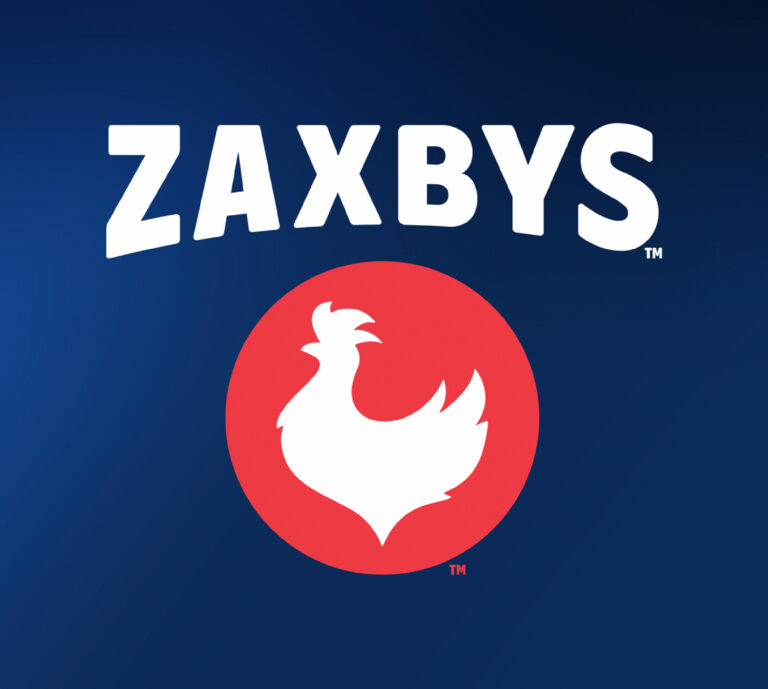×

See our latest work with Zaxbys, elevating their brand with a new look and environment that maintains their Southern heritage and hospitality.

Today it’s hard to believe, but it wasn’t that long ago that many brands held the misconception that their customers didn’t expect, or even want, great experiences. They didn’t believe their customers cared about design, and therefore didn’t see the value in investing in it. After years of more of the same, this tired way of thinking eventually created a disconnect between customers and brands. And now, we believe we’re at an inflection point. What was once considered premium design, or “too nice”, is now what customers have come to expect. Customers are demanding better design and better experiences regardless of the brand or category. In today’s competitive market, great design is now mandatory, it’s no longer a luxury.
There is a rising tide of customer expectations and the desire for things to be well thought out and beautiful. Restaurant design is certainly facing many challenges. Chief among them is the need to provide a better experience that attracts guests and keeps them coming back by providing an emotional connection to your brand. Rising construction expenses, along with escalating labor and food costs, are posing obstacles to delivering much more than a basic box. Yet even designs from decades ago, however out of fashion, provided more than that. This is a core dilemma that the team at ChangeUp faces every day working with our clients, so we want to share how we tackle it. In essence, let’s get at the question- how can we address costs while simultaneously meeting customer demands for a better experience?
Research and media reports underscore the significance of improving the guest experience (GX) as a means for growth, and we couldn’t agree more. Knowing full well that experience extends beyond the physical space of a restaurant and encompasses various culinary, training, operational, and “digital” elements that make dining memorable, it is the physical restaurant that pulls it all together. But to start, what exactly IS experience? Is it merely the overall satisfaction of your guests before, during and after their meal?
Yes, but… More explicitly it means that at each stage of a guest’s interaction with your concept, certain touchpoints create an emotional reaction. This helps them determine if the experience reaches, or better yet, surpasses their expectations. In a word, delight. The economic value of delight is hard to pin down, and can be hard to sustain. But delight is what we seek because it is an unrivaled motivator to remember, return, and advocate your restaurant. That is powerful because it doesn’t just trigger or persuade, it builds an enduring relationship. By fostering delight and an emotional response, you’re building trust and loyalty with customers, creating a memorable experience, and appealing to a broader audience. And ultimately that is what impacts your bottom line, driving additional sales and long-term growth.
We know that creating delight with the customer experience is a worthy goal because we see the power of it in our work. In combining guest insights, trends, collaboration with operations and culinary teams, a strong perspective on brand, and creativity, we can dissect the experience and smooth off the rough edges. Then we can look for opportunities to create new experiences that break-through the clutter to help concepts stand out, and delight. This can be seen in our latest work with Panda Express, for example, where we bridged the gap between the distinctiveness of their service style, and the emotional salience of their cultural heritage.
But how do you deliver on customers’ expectations for better, while managing the very real conversations about cost? Justifying additional expense can be challenging with already stressed franchisee investments and ambitious development objectives.
When thinking about taking on the challenge of enhancing the guest experience through design, the fundamental question arises: should the focus be on top-line growth, bottom-line profits, or both? Analyzing return purely on investment (ROI), you need to delve into short-term versus long-term thinking, considering the importance of brand building and the concept of opportunity cost—the cost of doing nothing. Of course, there is no magic answer, or one-size-fits-all approach, to determining the incremental value of an enhanced guest experience. But there are several ways to look at it, different justifications to framing what seem like upgrades as a new way of thinking about the business. And, correspondingly, new ways to support GX enhancements for stakeholders.
Here are seven approaches that we believe pave the way forward and reduce the headwinds of financial pushback:
1. Aspirational vs. backward-looking economics: Rather than solely benchmarking costs against past endeavors, make a strong shift towards aspirational targets that align with future goals. The “spend money to make money” axiom is not without merit.
2. Pruning legacy costs: Identifying and eliminating unnecessary legacy costs becomes crucial. Expenses that no longer contribute significantly to GX improvement should be phased out, allowing resources to be redirected elsewhere. Many existing restaurant design packages we see from clients have bloated from years of add-ons, many derived from past opinions or situations that may no longer matter.
3. Shifting resources: Creating new prototypes inevitably enables reallocating funds from one part of the design to another. A great example is shifting space and dollars from traditional dining experiences to areas such as drive through, mobile order, or third-party delivery considerations, recognizing evolving customer preferences.
4. Flexibility to avoid sunk cost anxiety: Encouraging adaptability and flexibility becomes vital in navigating the ever-changing restaurant landscape. Avoiding expensive design features that may go out of style or eventually be ignored and thinking more about ease of updating for future remodels, can save money in the short and long term. This mindset allows for adjustments when faced with unforeseen circumstances or emerging trends, reducing anxiety surrounding previous investment.
5. Re-positioning: Taking a broader look at the concept; by embracing a more premium positioning, restaurants can gain margin and cater to patrons willing to pay for, or expecting, an elevated experience.
6. Restructuring the business case: Likely the most difficult with corporate culture because it is radical; reapportion the marketing mix to spend less on top of the funnel marketing and more on the middle and bottom of the funnel. In other words, shift marketing dollars to subsidize the cost of the restaurant experience. The value of guest experience warrants more than a half-hearted effort. For instance, reducing franchisee advertising costs and putting it back into the restaurant to change the overall picture in favor of increased investment in experience.
7. Innovation: Brands face an ever-present imperative: to continuously push themselves. Restaurants must frequently analyze new concepts and take risks even when things are going well. What is it that sets you apart and adds real value? Customers will invest in uniqueness and authenticity. In a sea of sameness, it’s the restaurants that innovate with new ideas, bold strategies and striking designs who will thrive long-term.
There are answers to improving GX in restaurant design while addressing financial considerations. First off, its important to have solid success criteria for dialing up the guest experience. We see that as capturing the byproducts of delight as a motivator for guests to remember, return, and advocate your restaurant. The goal is to have a strategy to balance cost management and delight because there is no option to just do nothing. As the restaurant industry continues to evolve, embracing change and investing in GX proves to be the key to continued success and growth.


